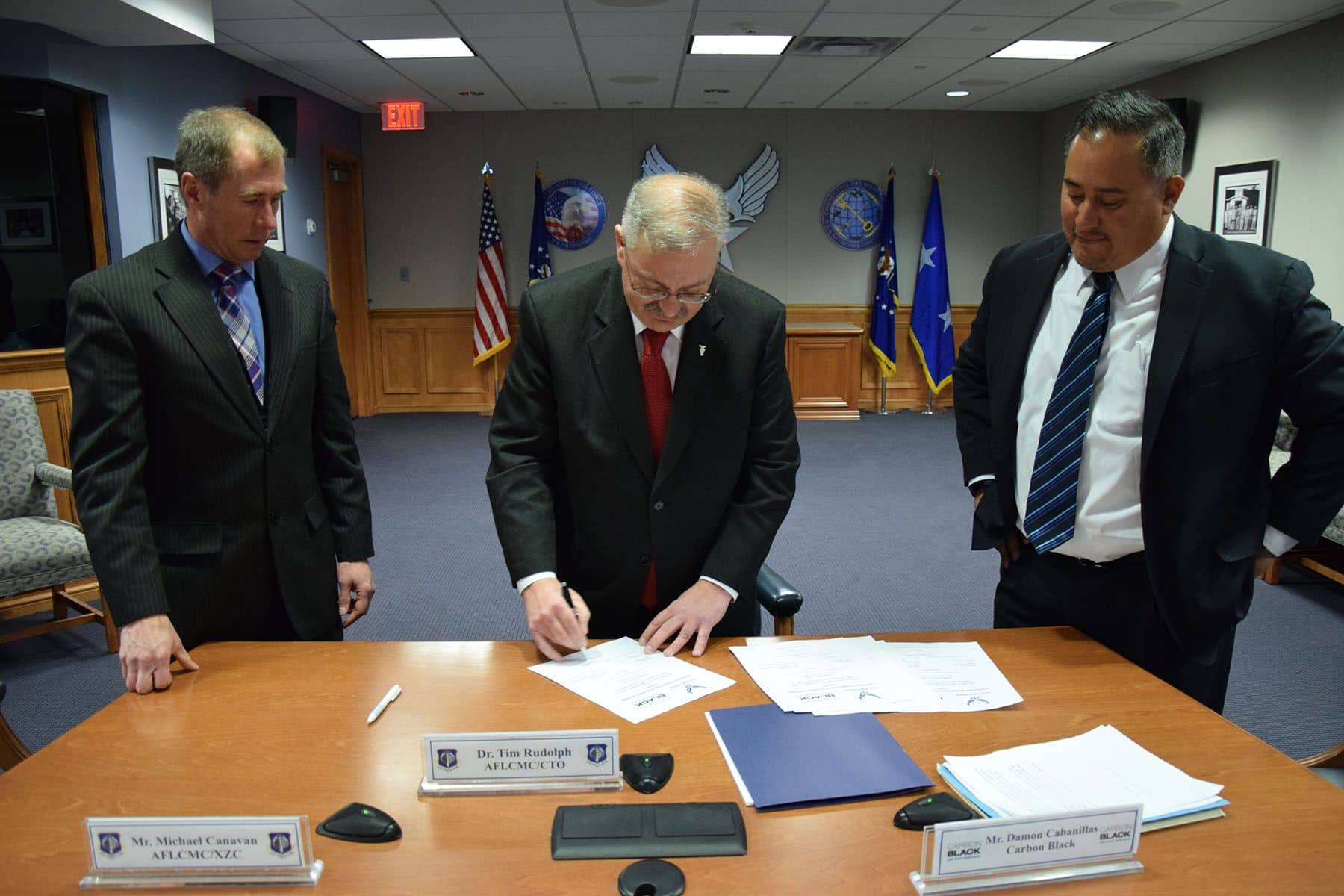HANSCOM AIR FORCE BASE: The Air Force Life Cycle Management Center electronic systems development division here and Carbon Black, a locally-based security company, signed a cooperative research and development agreement to improve cybersecurity for the Hanscom Air Force Base Collaboration and Innovation Center.
The HCIC serves as a collaborative testing and development arena for leading-edge advances in defense applications, cyber defenses and public safety. Carbon Black, based in Waltham, Massachusetts, is known for its work in endpoint next-generation security. Endpoint devices such as laptop and desktop computers are vulnerable to cyberattacks, and technology is required to prevent and reduce cyber intrusions and threats for computer networks that connect to these devices.
This agreement will allow Carbon Black to deploy their advanced endpoint security technology on the HCIC’s network to leverage identification, prevention, tracking and responses related to endpoint cybersecurity activity.
“We are really looking forward to experimenting with Carbon Black, learning from this opportunity and sharing these lessons across the Air Force,” said Mike Canavan, the electronic systems development division chief.
The CRADA will further enable the facility to provide crucial cybersecurity information, assistance and training to government, industry and academic activities that require secure research, development, test and evaluation environments.
“Together we will provide capabilities that will enhance the Air Force’s visibility at the endpoint level to help them understand the techniques, tactics and procedures that are used in adversarial attacks,” said Damon Cabanillas, Carbon Black’s vice president of federal sales and operations.
CRADAs provide quick, unique access to extensive government research and development resources that can yield powerful research results. This technology transfer agreement will enable the HCIC to implement real-time, continuous cyber defense software not currently used by the Air Force.
“Cyberwarfare is a clear and present danger and can significantly degrade our country’s ability to execute our mission on the frontline for both the government and commercial industry,” said Cabanillas. “This CRADA will allow our teams to collaborate on new ways of defending against cyber-attacks that most technologies can’t detect.”
Advanced endpoint security allows users to create a profile to identify, contain and ban specific behaviors, activities and threats. In addition, users have access to 10,000 industry and proprietary experts via an online community.
“To dramatically improve cyber resiliency and data asset protection, I aim to collaborate with key contributors and leverage multiple, diverse capabilities to combat adversaries in the digital age. One recent example is the research and development agreement between Hanscom Air Force Base and Carbon Black, which uses advanced tools with United States Air Force data sets to enhance learning across the enterprise,” said Lt. Gen. William Bender, the office of the secretary of the Air Force’s chief of information dominance and chief information officer.
Department of Defense computing networks, such as those used at the HCIC, are vulnerable to unknown threats. This cooperative effort will allow the center to be used as a model by Carbon Black to develop products that provide increased protection for DOD networks and current and future customers.
“We have had success getting some of the technology deployed and will continue to share these lessons as we move forward working together through this CRADA,” said Canavan.











